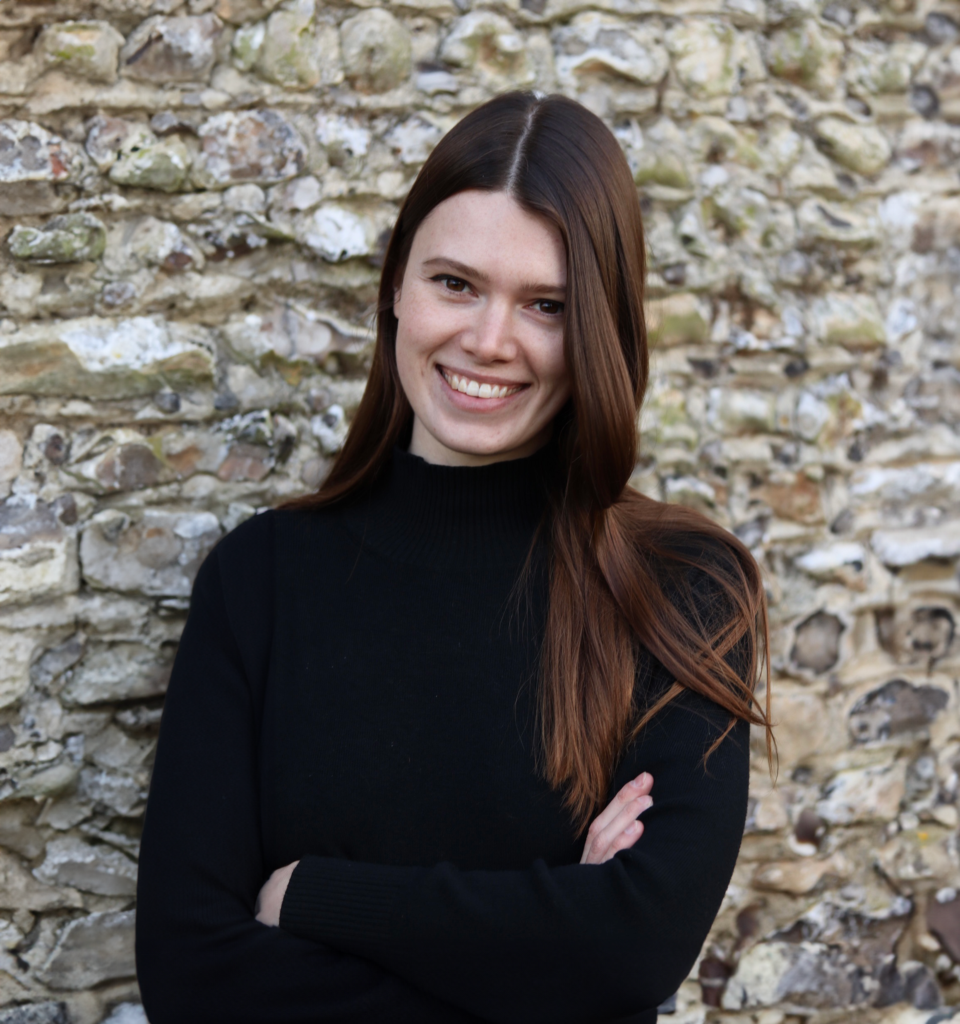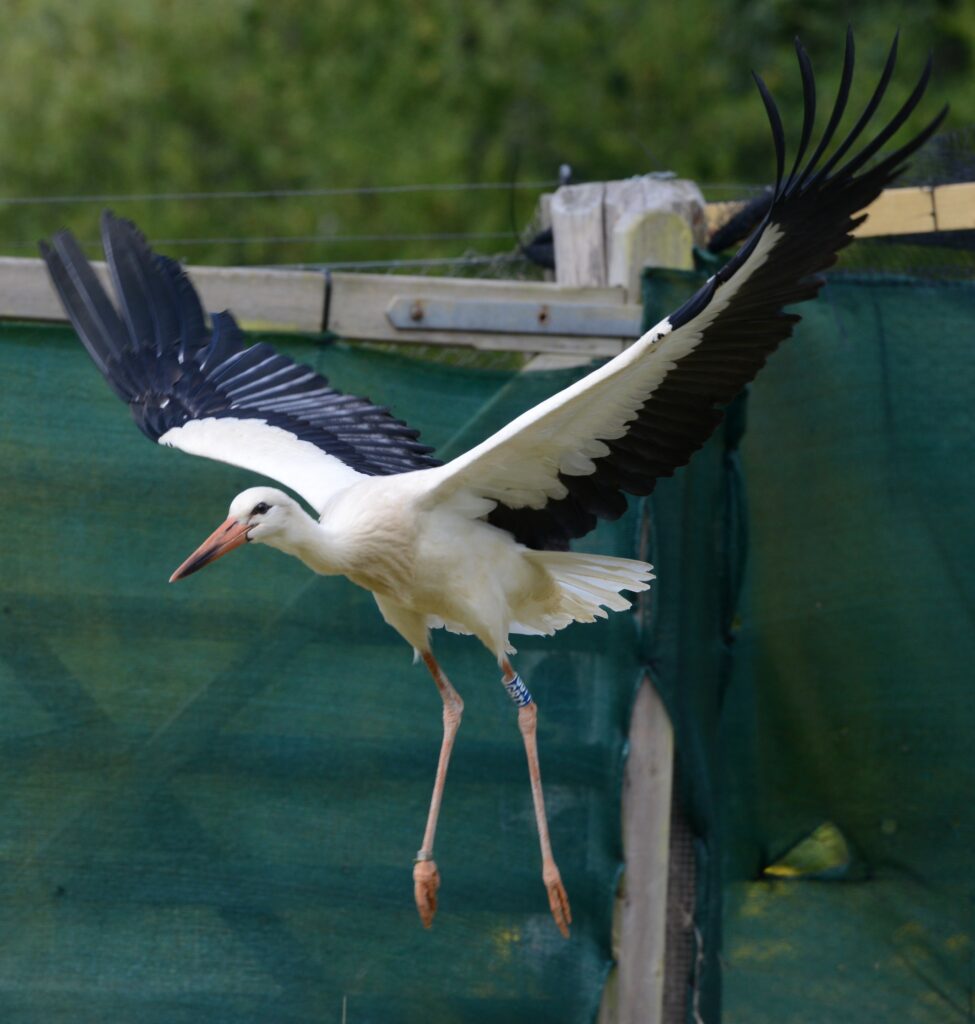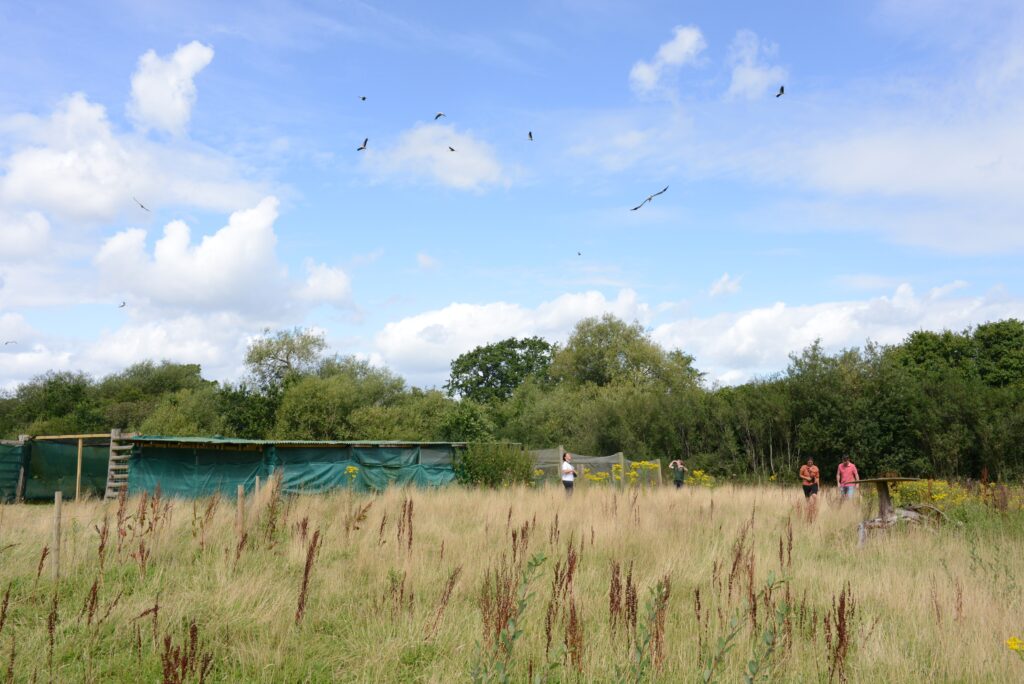
Episode 29: The Artists
PODCAST Episode 29: The Artists It’s Episode 29 and we’re visiting the beaver pen with a gaggle of delightful artists who help us draw a
Home / Young Storks Begin New Life at Knepp

Rhianne Jacklin | Marketing & Communications
On 7 August 33 young storks took their first flight into the wild, joining the colony of white storks – the first in Britain for over 600 years – that have established themselves at Knepp.

A young white stork bred at Cotswold Wildlife Park is released into the wild at Knepp, an annual event to boost the new colony. Rory Carnegie.
The White Stork Project is a collaboration between Knepp, Wadhurst Park, the Roy Dennis Wildlife Foundation,and Cotswold Wildlife Park – where the recently released birds were hatched and reared. The project aims to re-establish 50 wild breeding pairs of white storks in the UK by 2030.
White storks are thought to have been native to Britain but were hunted out, most probably for food, in the early Middle Ages. Across Europe, numbers have fallen in recent decades because of agricultural drainage of wetlands, collisions with powerlines and roads, pesticide use killing the insects they eat, and hunting in their wintering grounds in Africa. Reintroduction programmes in Europe are successfully bringing them back.
Every year, twenty or more white storks are seen flying over the UK from Europe in early spring, looking for somewhere to nest. They have not successfully done so since at least 1416 when a pair was recorded nesting on St Giles Cathedral in Edinburgh. The reason is that white storks need a colony for safety in numbers. Nesting together in close proximity helps them protect their eggs and chicks from predation by rooks, crows and raptors. When adventuring storks from Europe fail to find a colony in the UK they simply fly back to the continent.
The main aim of the White Stork Project, which began in 2017, was to establish an artificial colony in a six-acre pen at Knepp using non-flying birds imported from Warsaw Zoo that had been rehabilitated following accidents. The static birds would create a homing instinct in their free-flying offspring and – hopefully – attract in wild birds.
In 2020 two pairs of storks nested successfully in the tops of oak trees at Knepp. Three of the birds were free-flying storks, born in the UK from the White Stork Project and one, remarkably, was a wild, unringed bird.
Every year an additional twenty or more juvenile storks bred at Cotswold Wildlife Park are transported to Knepp where they spend two weeks acclimatising in an aviary inside the main pen. These new birds help boost the numbers in the colony. Releasing them here at Knepp, where they take their first flight, is enough to imprint Knepp on them as home. If they successfully migrate to Europe they will hopefully meet up with wild birds and return to Knepp in two or three years’ time when they are sexually mature, to nest and bring up another generation of wild white storks in the UK.

White storks released from aviary inside our 6 acre pen.
All our birds are tagged with identification rings on their legs, and seven have also been fitted with GPS tracking devices. Our team will closely monitor the storks’ progress in the coming months. At time of writing, they are currently prospecting along the south coast, assessing the best route to cross the Channel. You can follow their movements live on the interactive map at whitestorkproject.org where you can also learn how to join our citizen science project by reporting sightings.

PODCAST Episode 29: The Artists It’s Episode 29 and we’re visiting the beaver pen with a gaggle of delightful artists who help us draw a

PODCAST EPISODE 30: The Beavers Revisited It’s episode 30 so it’s time for a beaver project update! We’re joined again by national beaver specialist, and

PODCAST EPISODE 31: The inoculated boxes Episode 31 is a short n’ sweet one which sees the return of Dr Matt Wainhouse to Knepp, in
Knepp Wildland Safaris, our gardens and campsite are all about the quiet and patient observation of nature.
Some of the species we are likely to encounter are shy or can be frightened by loud noises or sudden movements. Our campsite with open-air fire-pits, wood-burning stoves and an on-site pond is unsuitable for small children.
For this reason, our safaris, garden visits, holiday cottages and campsite are suitable only for children of 12 and over.